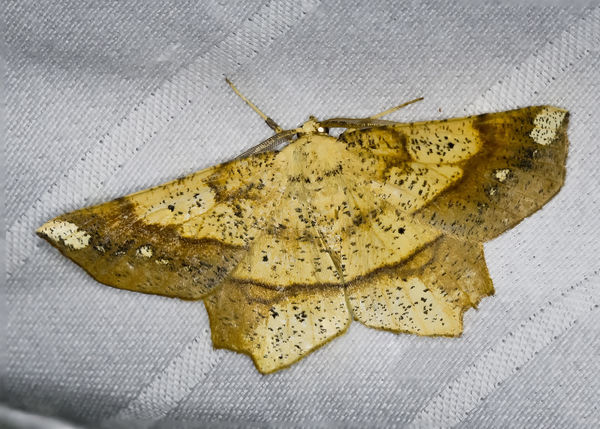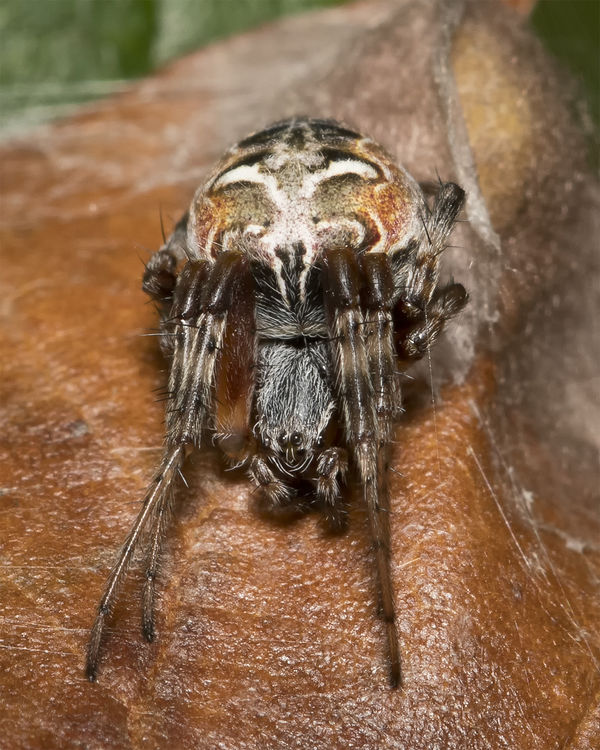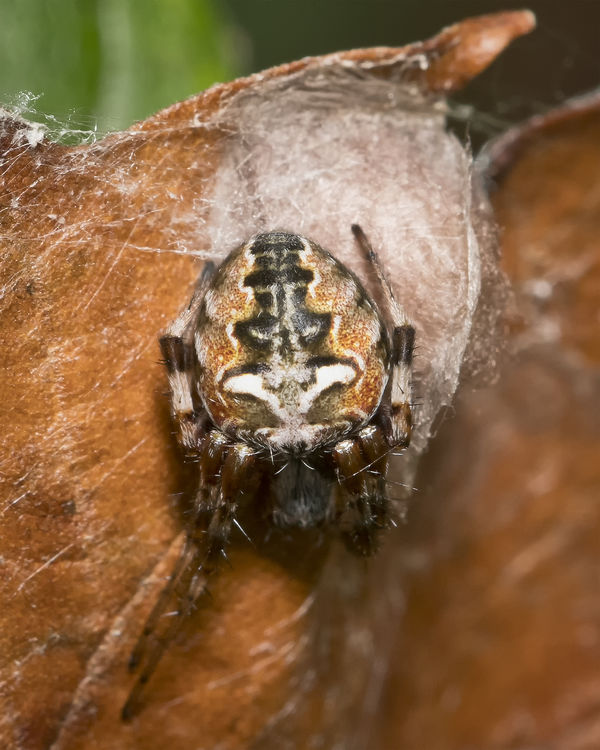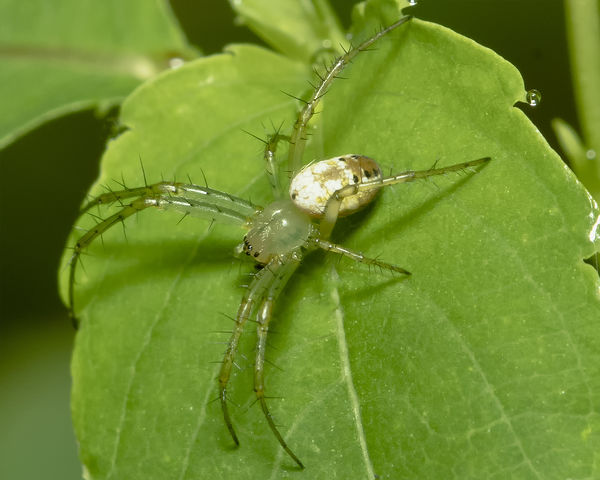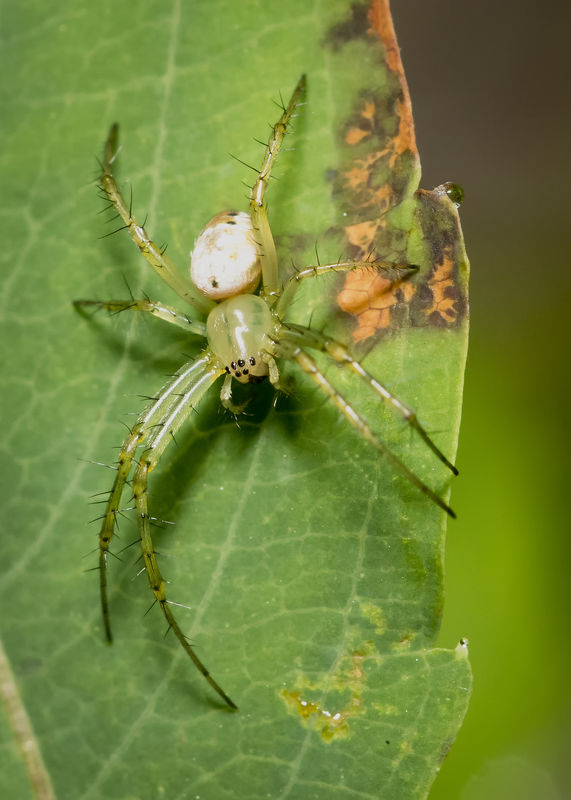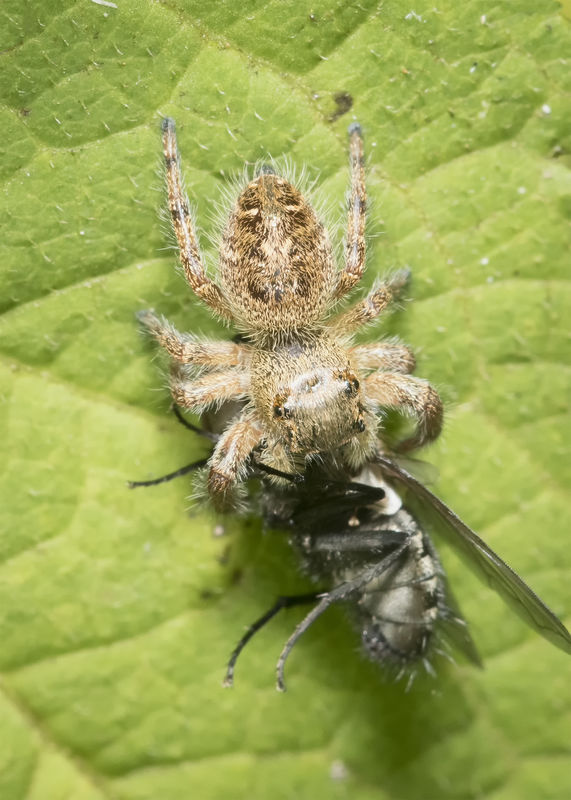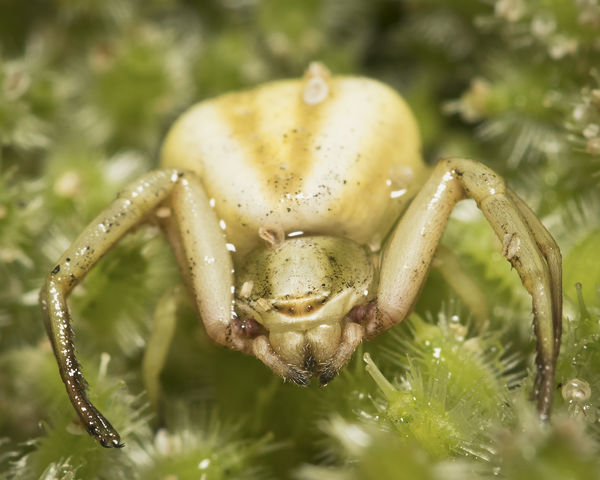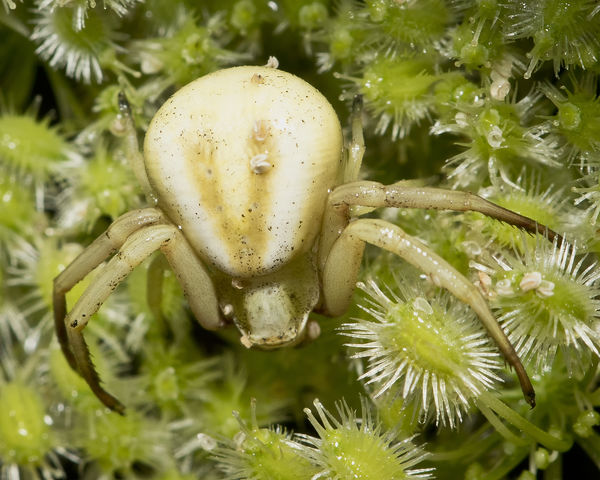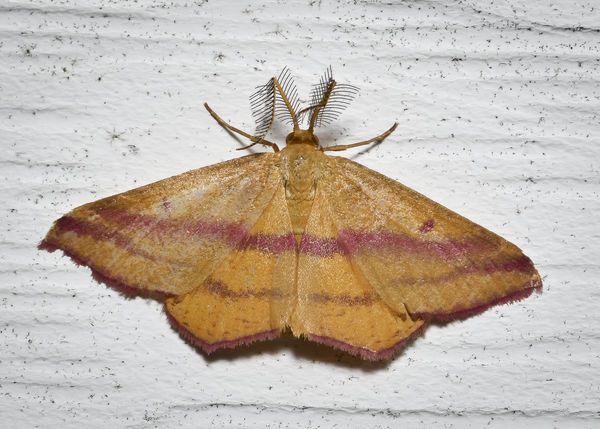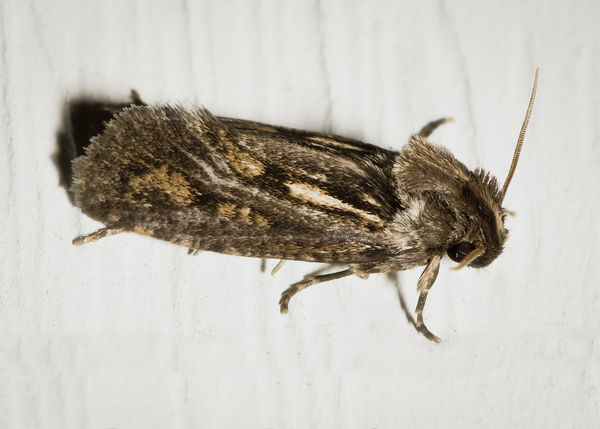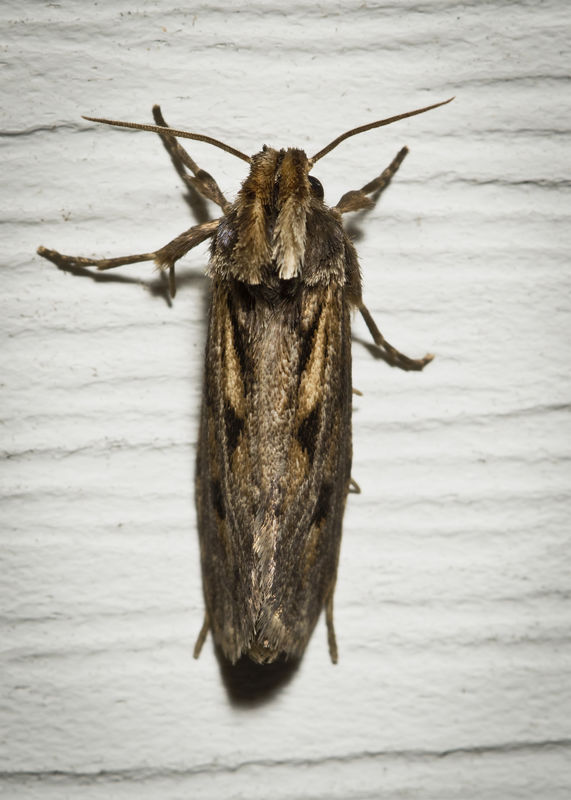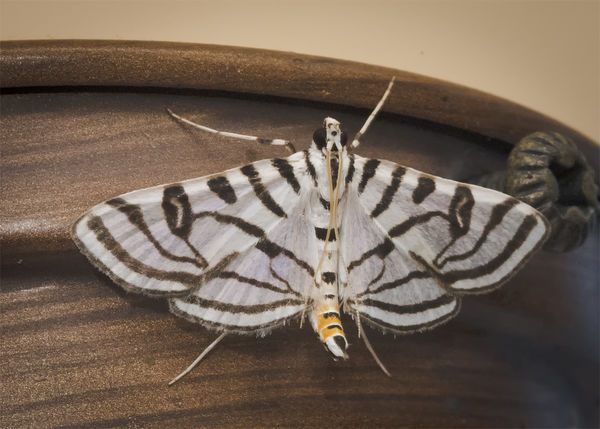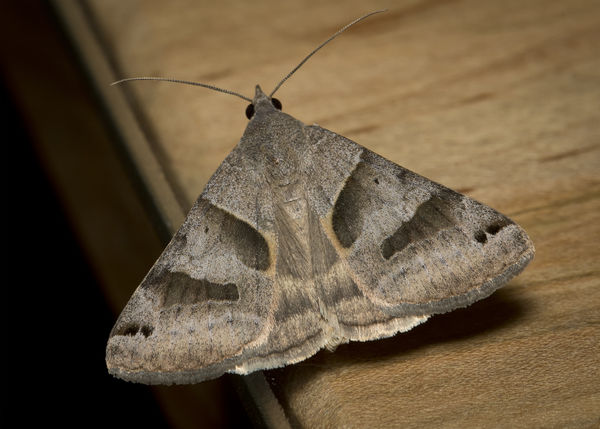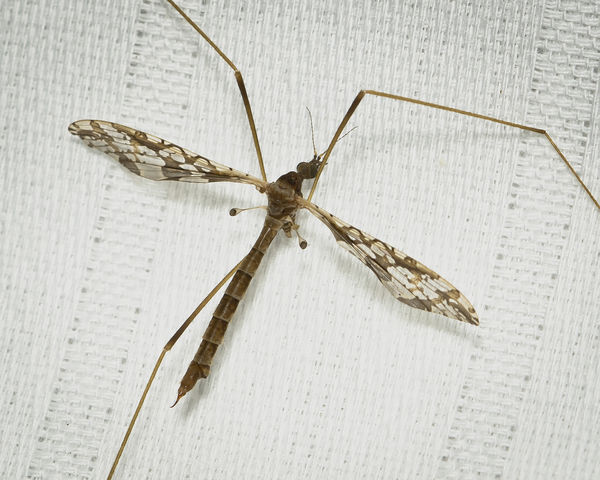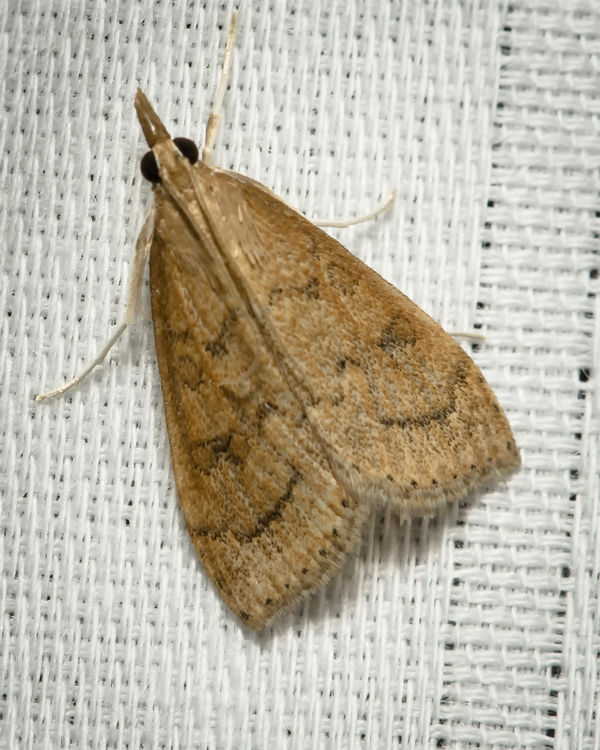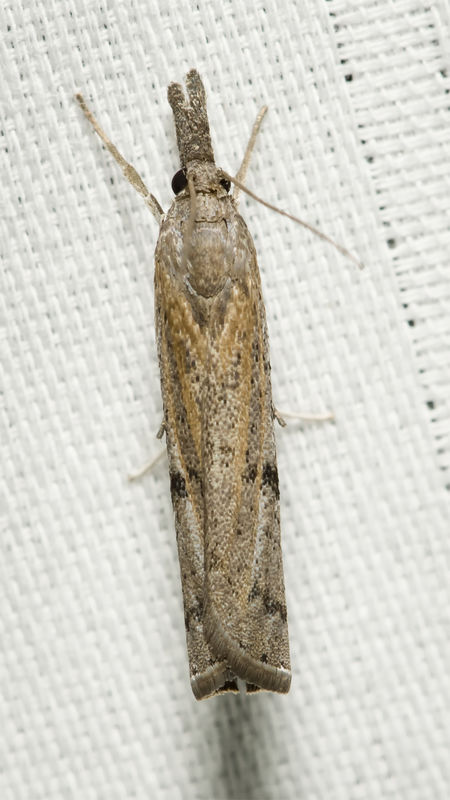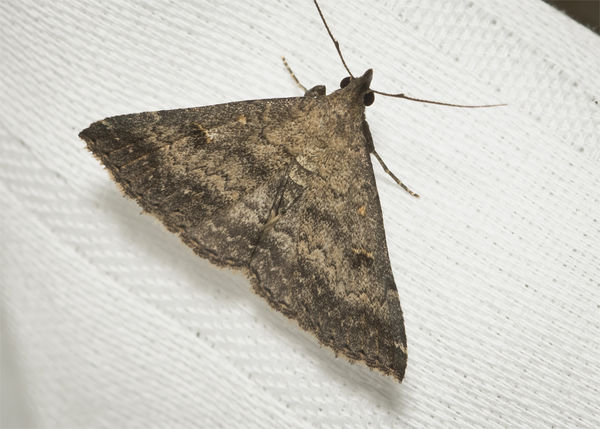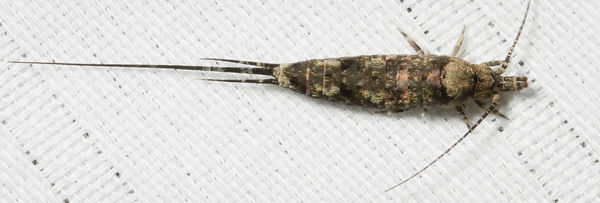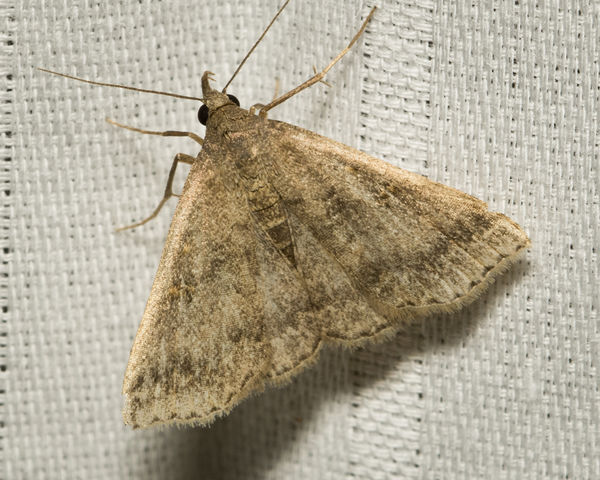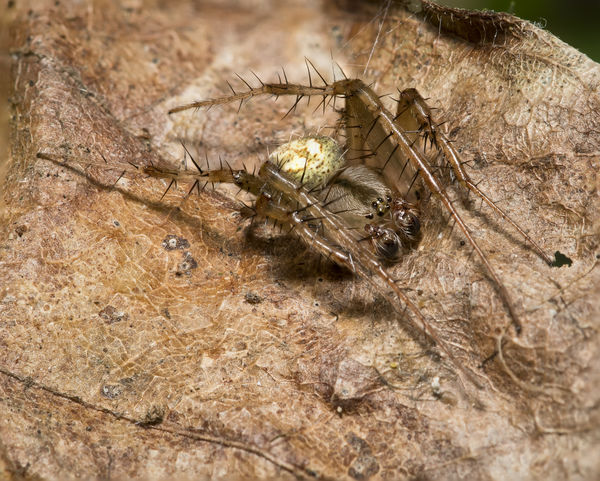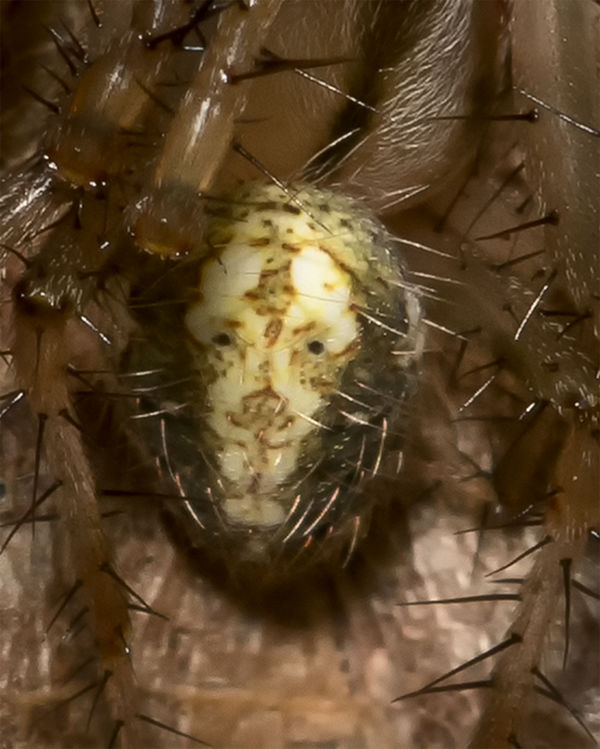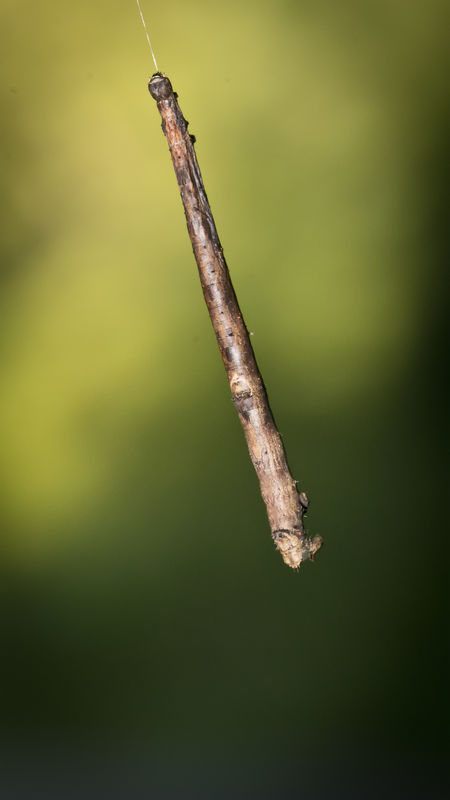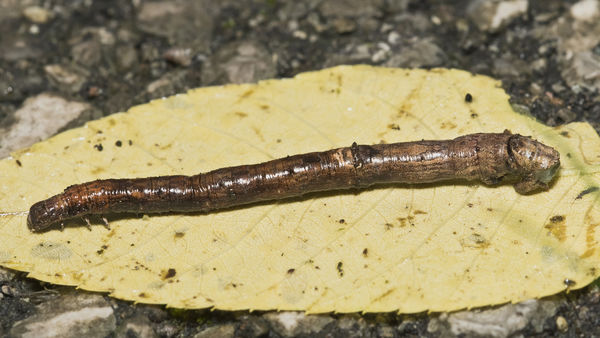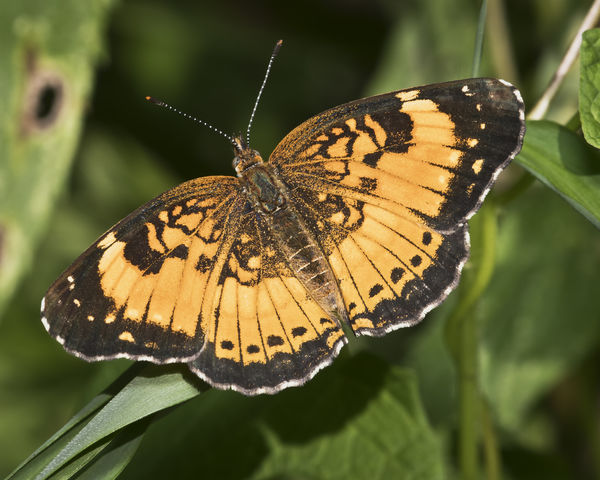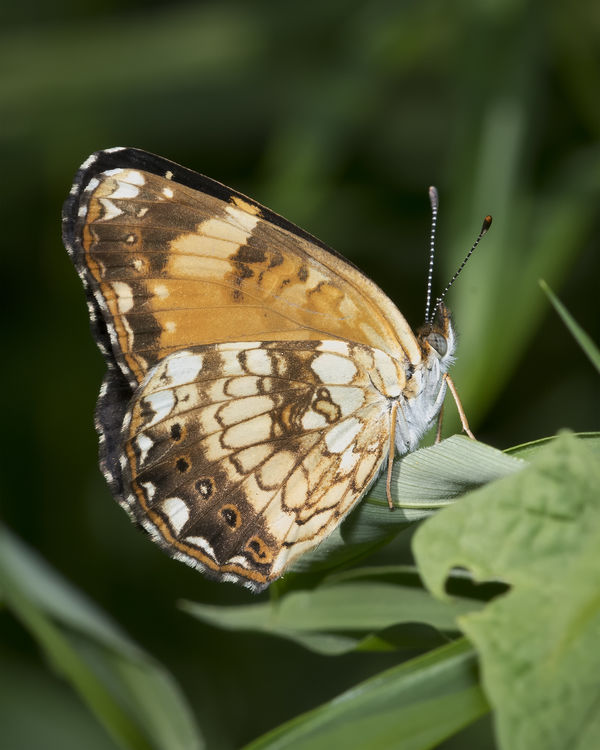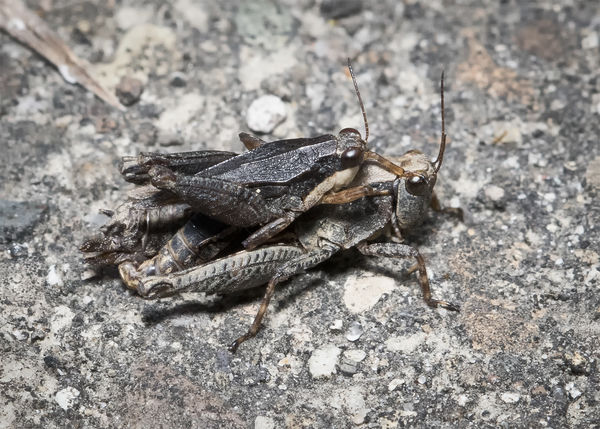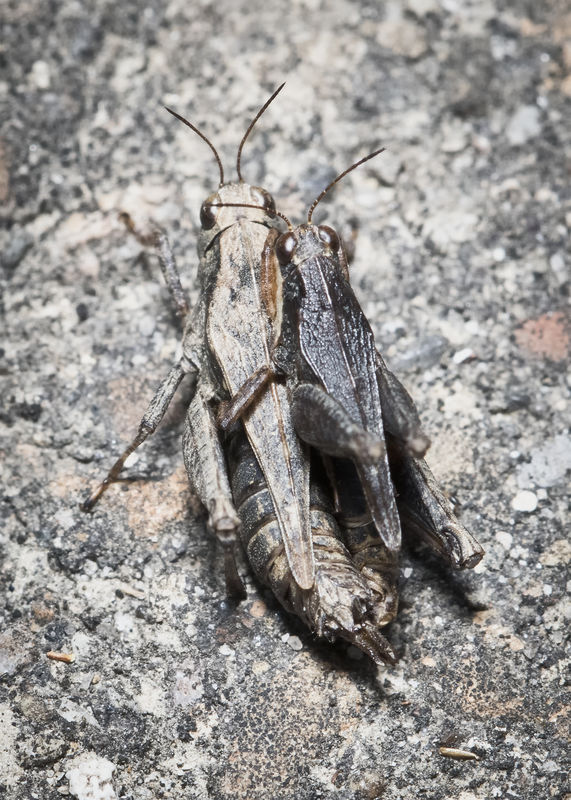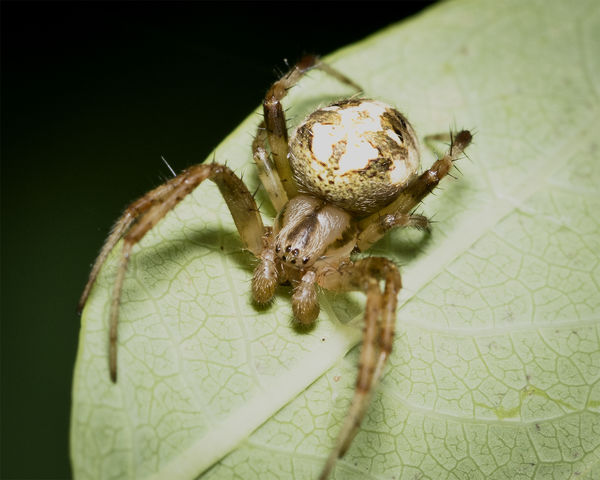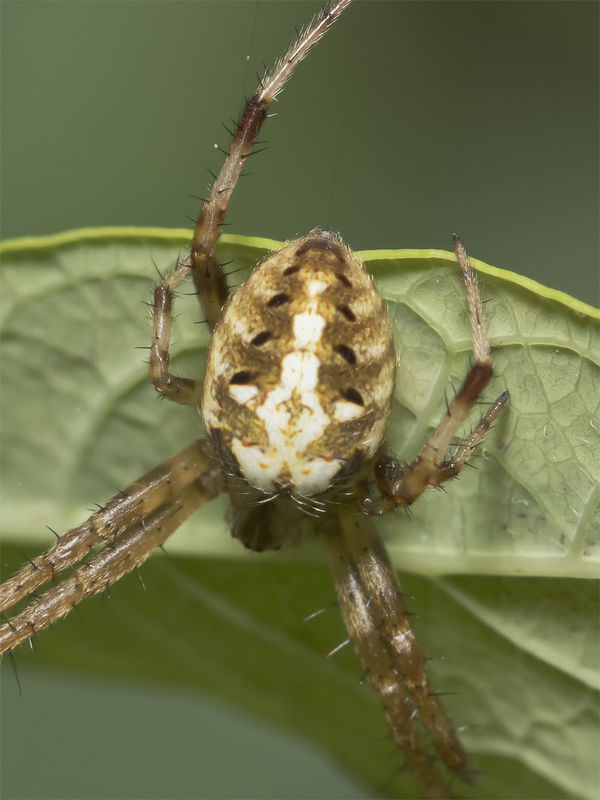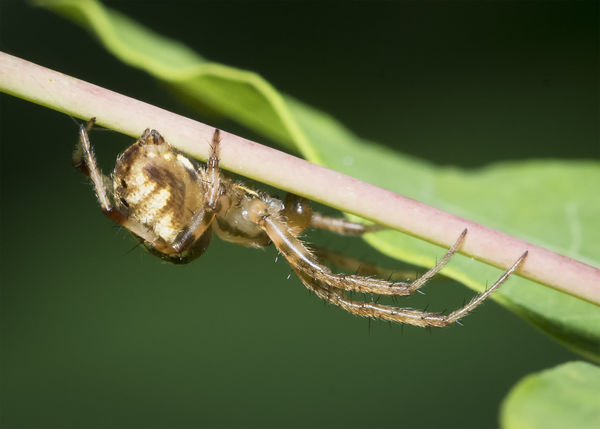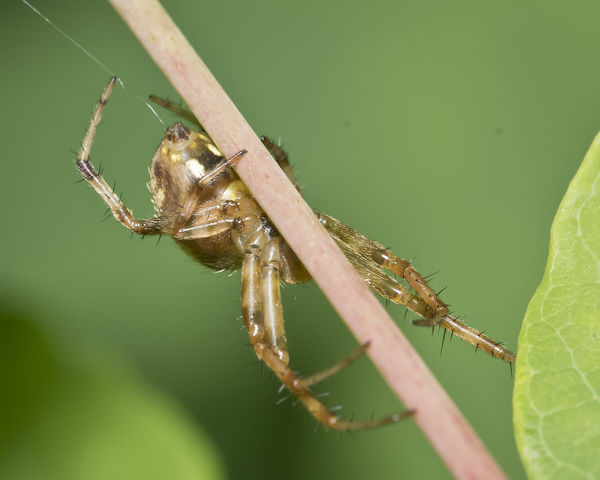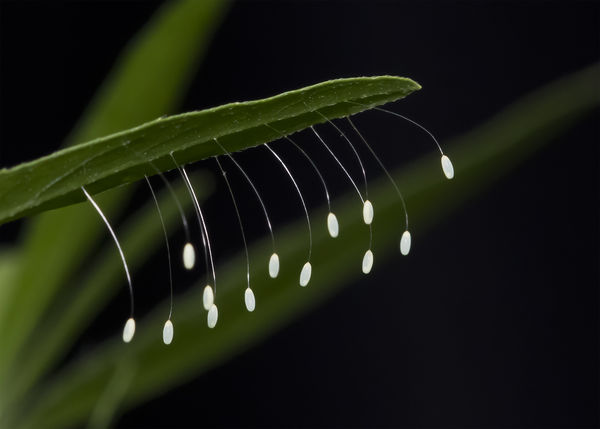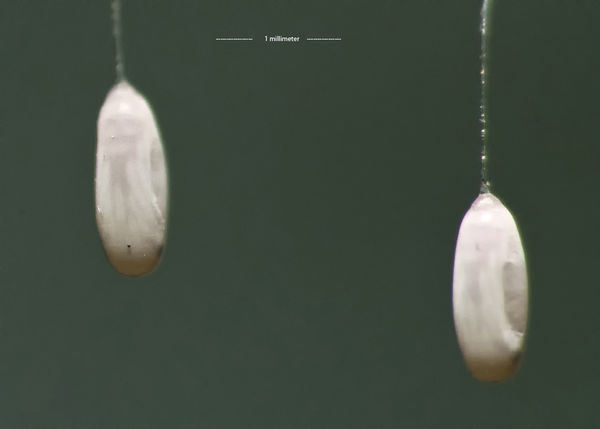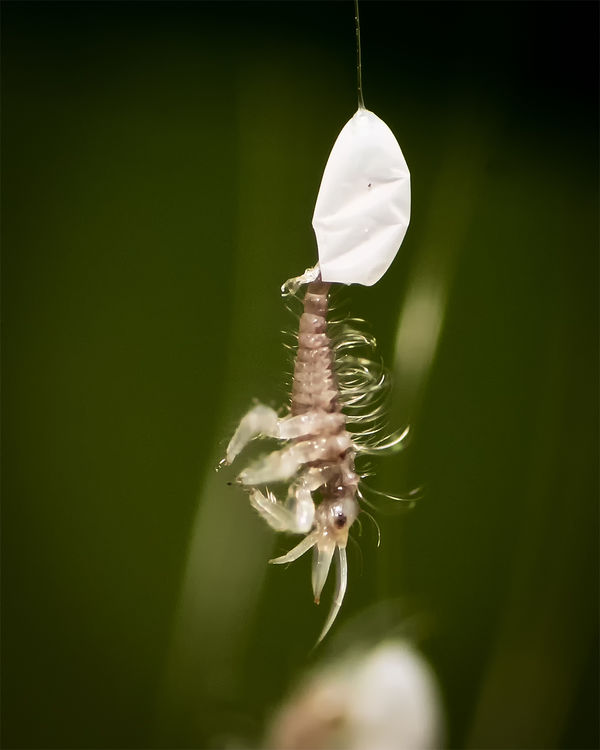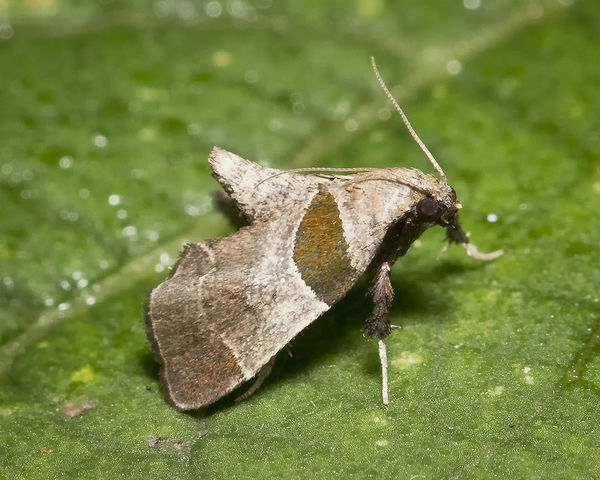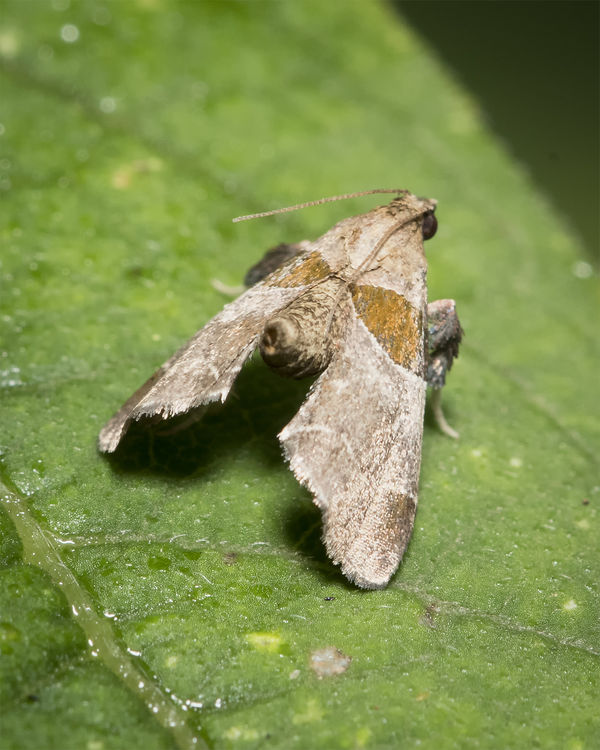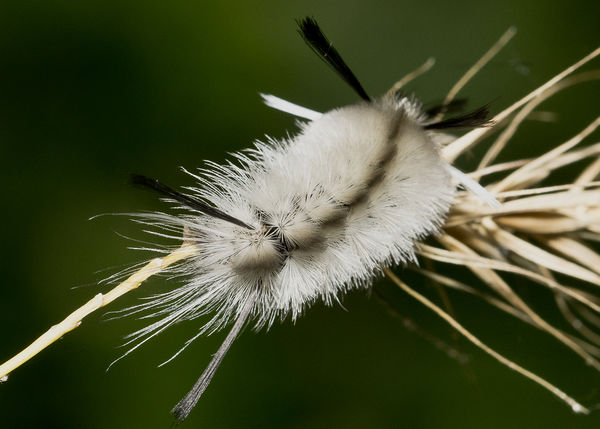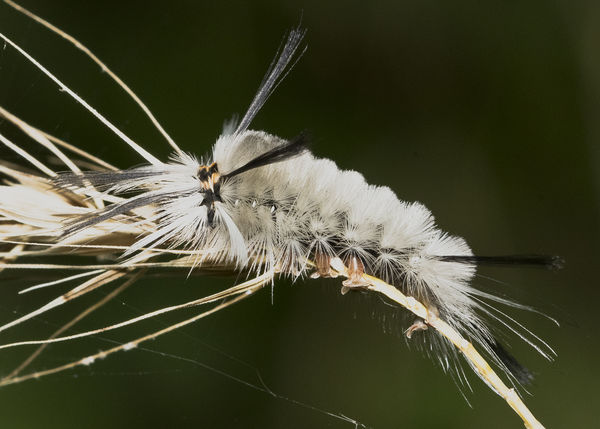Posts for: downing
Aug 20, 2017 16:01:21 #
steve1oshea wrote:
Excellent work. Did you use a focusing rail, adjusted focus by lens ring or using auto-focus?
Steve1oshea:
No focus rail on this one. I use a focus rail when the subject is very uneven or deep. On smoother objects I use the following method to select the layers.
1. Camera on Tripod, Live view, Manual focus, shutter delay.
2. Set the camera controls so the the focus point can be moved about on the live-view screen.
3. Move the live-view focus square to various points on the subject and manually focus on each one and take a shot.
4. To select the focus points I use the upper, lower, right and left edges of the subject. Then add layers for particularly high or low points of the subject.
Suggest using a Hoodman Loupe or other magnifier to focus.
Aug 20, 2017 15:38:11 #
Came to Black light last night. Euchlaena amoenaria.
Wing span 1-1/2 inches.
Seven layer stack. Tripod used.
No flash was used. Attached an Led Ring Light to the front of my 200 mm Nikon lens.
This eliminated hot spots that are hard to control with flash even when using a diffuser.
The Ring Light is manufactured for use with microscopes. brightness is adjustable.
Amphoto Model LED-144-YK. This model powered by 110 volt AC.
The ring internal diameter is 60 mm so I had to use step-down and step-up rings so it would fit on my lens.
-
Wing span 1-1/2 inches.
Seven layer stack. Tripod used.
No flash was used. Attached an Led Ring Light to the front of my 200 mm Nikon lens.
This eliminated hot spots that are hard to control with flash even when using a diffuser.
The Ring Light is manufactured for use with microscopes. brightness is adjustable.
Amphoto Model LED-144-YK. This model powered by 110 volt AC.
The ring internal diameter is 60 mm so I had to use step-down and step-up rings so it would fit on my lens.
-
Aug 20, 2017 09:49:34 #
Mark Sturtevant wrote:
Very good. Orb weavers with that abdominal pattern can be hard. It resembles Metepeira, but I cannot be sure on that.
Mark:
Thanks for the info. Bug-Guide information says Metepeira labyrinthea is the only Meteperira in the Eastern USA.
Aug 19, 2017 20:21:56 #
Trip to the park and happened upon four spiders.
1. Interesting abdominal pattern. Orb Webweaver Don't know the species. Two views.
2. Probably Mangora placida. Two views.
3. Jumping spider with prey.
4. Crab spider. Probably Misumenoides formosipes. Two views.
-
1. Interesting abdominal pattern. Orb Webweaver Don't know the species. Two views.
2. Probably Mangora placida. Two views.
3. Jumping spider with prey.
4. Crab spider. Probably Misumenoides formosipes. Two views.
-
Aug 17, 2017 19:45:54 #
More moths attracted to light. These found in a rural area around Cornith Kentucky.
1. Pink and orange. About 1-1/4 inch wingspan.
2. Moth about 5/8 inch long. Two views. The only color seen in normal light is the orange streak
on both sides from wing base to mid abdomen. The palps are held curved over the head which is a bit unusual.
3. zebra Moth.
4. Brown moth with striking design.
-
1. Pink and orange. About 1-1/4 inch wingspan.
2. Moth about 5/8 inch long. Two views. The only color seen in normal light is the orange streak
on both sides from wing base to mid abdomen. The palps are held curved over the head which is a bit unusual.
3. zebra Moth.
4. Brown moth with striking design.
-
Aug 13, 2017 15:26:13 #
I read that shining a Black-Light (UV) on a white cotton sheet at night world attract insects.
Here is what I got last night. Mostly moths as expected.
Here is what I got last night. Mostly moths as expected.
Aug 11, 2017 11:40:02 #
Small male spider, just over one-fourth inch long. Found inside a curled-up leaf. This is an eight layer stack. This stack was made in the field without a using a focusing rail.
Technique as follows:
1. Set up using a tripod.
2. Set the camera to live view, manual focus and shutter delay.
2. Let the focus indicator control so that it can be moved around on the screen.
3. Move the focus indicator to various points that you want to be in focus.
4. At each point using live view magnification; focus and take a shot. Use a loupe for precise focus.
The main disadvantage of this method is missing where you might need a layer.
For instance in this shot the spiders front legs are not in focus toward the front.
Also included is a single shot showing the spiders abdomen pattern.
-
Technique as follows:
1. Set up using a tripod.
2. Set the camera to live view, manual focus and shutter delay.
2. Let the focus indicator control so that it can be moved around on the screen.
3. Move the focus indicator to various points that you want to be in focus.
4. At each point using live view magnification; focus and take a shot. Use a loupe for precise focus.
The main disadvantage of this method is missing where you might need a layer.
For instance in this shot the spiders front legs are not in focus toward the front.
Also included is a single shot showing the spiders abdomen pattern.
-
Aug 10, 2017 21:48:27 #
CathyAnn wrote:
Excellent shots! We sure can see the detail. 



Thanks fro the comment CathyAnn. For me in Nacro and close-up, detail comes first, composition second.
Aug 9, 2017 21:16:30 #
Moth larva found hanging from silk. Thought it was a piece of plant stem until I looked closer.
The caterpillar is just under two inches when stretched out.
Last instar Plagodis acoolaria are said to be one of the most successful stem mimics.
Two images, one hanging and one from the side.
-
The caterpillar is just under two inches when stretched out.
Last instar Plagodis acoolaria are said to be one of the most successful stem mimics.
Two images, one hanging and one from the side.
-
Aug 6, 2017 16:40:05 #
A butterfly top and under-wing views.
Pygmy Grasshopper pair. Family Tetrigidae. Note that the pronotum extends back over the abdomen.
This is characteristic of the Tetrigidae.
-
Pygmy Grasshopper pair. Family Tetrigidae. Note that the pronotum extends back over the abdomen.
This is characteristic of the Tetrigidae.
-
Aug 6, 2017 16:25:56 #
Four views of a small male spider.
-
-
Aug 4, 2017 21:16:13 #
Scott: I have confirmed your identification on Bug-Guide. It turns out there is some color variation and I missed that.
Thanks for your help.
Thanks for your help.
Aug 4, 2017 21:09:04 #
I have discovered that the caterpillar is the larva of the moth Halysidota tessellaris.
Aug 3, 2017 20:52:49 #
On the 27th. of July I discovered some Lacewing eggs hanging from the bottom of a leaf. They were not there on the 26 of July.
On the 30th. of July there was some internal structure visible in the eggs.
On the 31st. of July The eggs hatched.
-
On the 30th. of July there was some internal structure visible in the eggs.
On the 31st. of July The eggs hatched.
-
Aug 3, 2017 12:12:41 #
1. Moth, about 3/8 inch long. Have not previously seen one with the wings so far from the abdomen when at rest.
2. Caterpillar. I Can't seem to find a match in my picture books or Bug-Guide. Similar to the Hickory Tussock Moth but not
the same.
Body black. Orange markings on top of thorax. Tussocks along mid-line of abdomen tipped in black. About an inch long
but seems to be in contracted position.
-
2. Caterpillar. I Can't seem to find a match in my picture books or Bug-Guide. Similar to the Hickory Tussock Moth but not
the same.
Body black. Orange markings on top of thorax. Tussocks along mid-line of abdomen tipped in black. About an inch long
but seems to be in contracted position.
-
